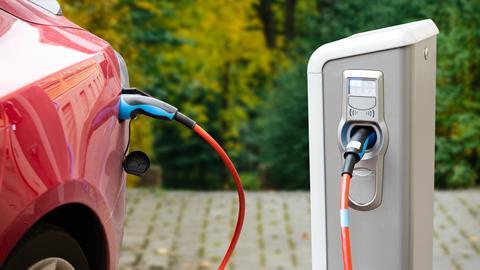Kieran Fisher, insurance account manager at Cazoo Data Services, tells Insurance Times how EVs will fundamentally impact claims and how insurtechs will support this inevitable change
With the global increase of electric cars set to jump from seven million to 100 million in the next eight years, the insurance market is due to go through some rapid and dramatic changes.
Understanding the risks and liabilities around insurance policies for EVs at inception will certainly throw up some interesting challenges.
Some of the main concerns will centre around how these vehicles, the new technology within them and the claims infrastructure will transform.

EV repair impact
When repairing an EV vehicle after an accident, flood or fire, there will naturally be a very small amount of individual parts. Instead, it will have complete systems, motors and batteries.
These systems will be less mechanical and more electronically connected. This means that not only does the part have to be mechanically compatible, but it also must have the relevant software to ‘speak’ to the rest of the car.
These parts come with their own supply chain, cost and programming concerns.
Fitting the part will only be one piece of the puzzle. Reprogramming, along with embedding software and sensors, will be even more prevalent than it is today. Third party or salvage parts will become harder to access too, due to liability concerns and software compatibility with these parts.
All of these factors can increase the likelihood of the vehicle being declared a total loss.
Supply chains may also become less abundant. Issues like the current microchip shortage may put additional pressure and delays on the correct replacement parts being readily available for repair, resulting in extended claim cycle times and pushing up hire and storage costs.
Semi-autonomous driving
Counteracting this uncertainty is the rise of EV tech accompanying the improvement of advanced driver assistance systems (Adas) functionality and semi-autonomous cars. This, in turn, should decrease claims volumes and severity more and more over time.
Detailing and decoding the Adas functionality fitted to each car on cover helps claims departments understand the potential repair costs and parts availability.
They can then break down the type of technology on that particular EV to include details like the type and amount of sensors fitted on the various driver assist functions - all before they have even seen the car.
Detailing non-Adas-related optional extras fitted to a particular vehicle, such as upgraded touch screen consoles, will further empower claims teams at the first notification of loss, enabling them to work out the best solution for the claim.
While data and insight tools are available now, insurtech companies are currently working on more ways to help unlock the data needed to provide insights that ensure the best decisions are made for each claim. Businesses that take advantage of new technology and real-time valuation tools will be highly competitive and at the forefront of tomorrow’s EV insurance needs.

Hosted by comedian and actor Tom Allen, 34 Gold, 23 Silver and 22 Bronze awards were handed out across an amazing 34 categories recognising brilliance and innovation right across the breadth of UK general insurance.




















































No comments yet